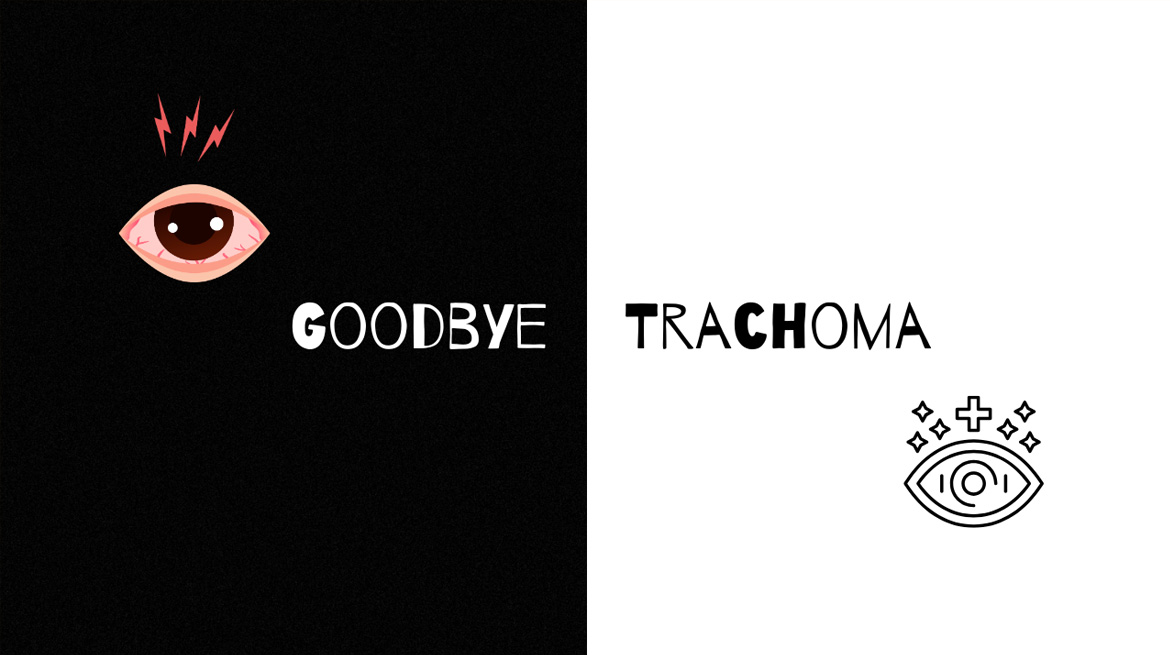October 2024 brought some heartening news for India: the World Health Organization declared that India has successfully eliminated trachoma as a public health problem. This achievement made India the 19th country globally and the third in the South-East Asia Region (after Nepal and Myanmar) to attain trachoma elimination status. This journey wasn’t just about tackling a disease—it was about lifting the weight of preventable blindness off millions of people and giving communities new hope.
What is trachoma? It is more than just a difficult word; it’s a bacterial infection of the eyes that has silently haunted humanity for centuries. If left untreated, trachoma leads to scarring on the inside of the eyelids, causing them to turn inward—a condition known as entropion. Imagine living with lashes constantly scraping against your eyes; it’s as painful as it sounds and can eventually lead to blindness. The infection is caused mainly by the bacterium Chlamydia trachomatis, specifically types A, B, and C, which thrive in crowded and impoverished settings. Trachoma spreads easily, especially among children aged 2-5, who become unwitting reservoirs of the disease, often infecting adults in close contact, especially women who care for them. This makes trachoma a deeply gender-sensitive issue, as women’s caregiving responsibilities put them at greater risk, highlighting the need for targeted awareness and prevention efforts within families and communities. Additionally, flies, poor hygiene, and the absence of clean water also play a major role in spreading this invisible menace.
What does it mean to “Eliminate” Trachoma? The WHO has set some strict standards to determine when a country has truly eliminated trachoma as a public health issue:
- The prevalence of advanced trachoma (trachomatous trichiasis) has to be less than 0.2% among adults over 15 years.
- The disease’s inflammatory phase (trachomatous inflammation) should be below 5% in children aged 1-9 years, consistently, without needing mass antibiotic treatments.
- Finally, the country must have a reliable system to identify and treat any new trachoma cases with the necessary resources.
These conditions ensure that trachoma isn’t merely pushed under the rug but stays under control for years to come.
Achieving this milestone across every previously affected area in India was no small feat. It all began in the 1950s and 1960s, a time when trachoma was among the leading causes of blindness worldwide, hitting India’s northern states hardest. Families would often suffer together, as this highly contagious disease spread easily, impacting whole communities. Recognizing the need for change, India took its first bold step in 1963 with the launch of the National Trachoma Control Programme. Supported by WHO and UNICEF, this initiative was the country’s first organized effort against trachoma, establishing a foundation for future action.
In 1976, the battle against trachoma was strengthened as it became part of the National Programme for Control of Blindness, signifying its importance in the broader public health agenda. Over the years, India’s focused efforts began to yield results. By 2017, the country achieved a major milestone—it was declared free from “infective trachoma.” Blindness cases attributed to trachoma had dropped to an astonishing 0.008%, and prevalence in children aged 1-9 years had fallen to just 0.7%, well below WHO’s threshold of 5%.
But India didn’t stop there. From 2021 to 2024, with the goal of complete elimination within sight, the government intensified its efforts through extensive surveys and monitoring. The National TT-only Survey meticulously tracked cases across endemic regions to ensure no one was left behind. Finally, in October 2024, India’s hard work and dedication paid off. WHO officially confirmed that India had met all the criteria, and the country was proudly declared trachoma-free—a testament to decades of persistence and a victory for public health in India.
The strategy that made it happen: SAFE
Surgery: For those with advanced trachoma symptoms—like trichiasis and entropion—surgery was necessary to prevent permanent damage and preserve sight. These operations provided immediate relief and saved many from a future of blindness.
Antibiotics: Antibiotics were used to treat active infections, cutting off the spread of trachoma within communities. India’s approach was flexible: high-prevalence areas received mass treatment, while lower-risk areas relied on selective treatment to control the disease.
Facial cleanliness: This was a straightforward but powerful preventative measure. Community programs educated families, especially those with young children, on the importance of keeping faces clean to avoid transmission.
Environmental improvement: Here was the long-term solution—providing communities with better access to clean water and sanitation. When families have access to clean water, it’s easier to keep faces clean, prevent infections, and maintain a healthier environment.
Each step in the SAFE strategy addressed a different aspect of the trachoma transmission cycle. Implemented consistently, these interventions cut the disease off at its roots, empowering families to protect themselves against future infections.
Though India has eliminated trachoma as a public health problem, the work doesn’t stop here. Continuous monitoring and public health vigilance are essential to make sure the disease doesn’t return. Surveillance efforts will stay in place to identify and treat any potential cases, ensuring that trachoma remains a thing of the past for future generations. Additionally, the disease still affects about 1.9 million people worldwide across 39 countries. For those countries, India’s success story offers hope and a roadmap. The same challenges India faced—poverty, crowded living conditions, and limited access to water and sanitation—exist in other regions battling trachoma. But India’s journey proves that trachoma is beatable, no matter how embedded it may seem.
The global target is to eliminate trachoma by 2030, but India reached this goal six years early. Other nations can look to India’s multi-faceted approach, from environmental improvements to community involvement, as a model for effective disease control.




